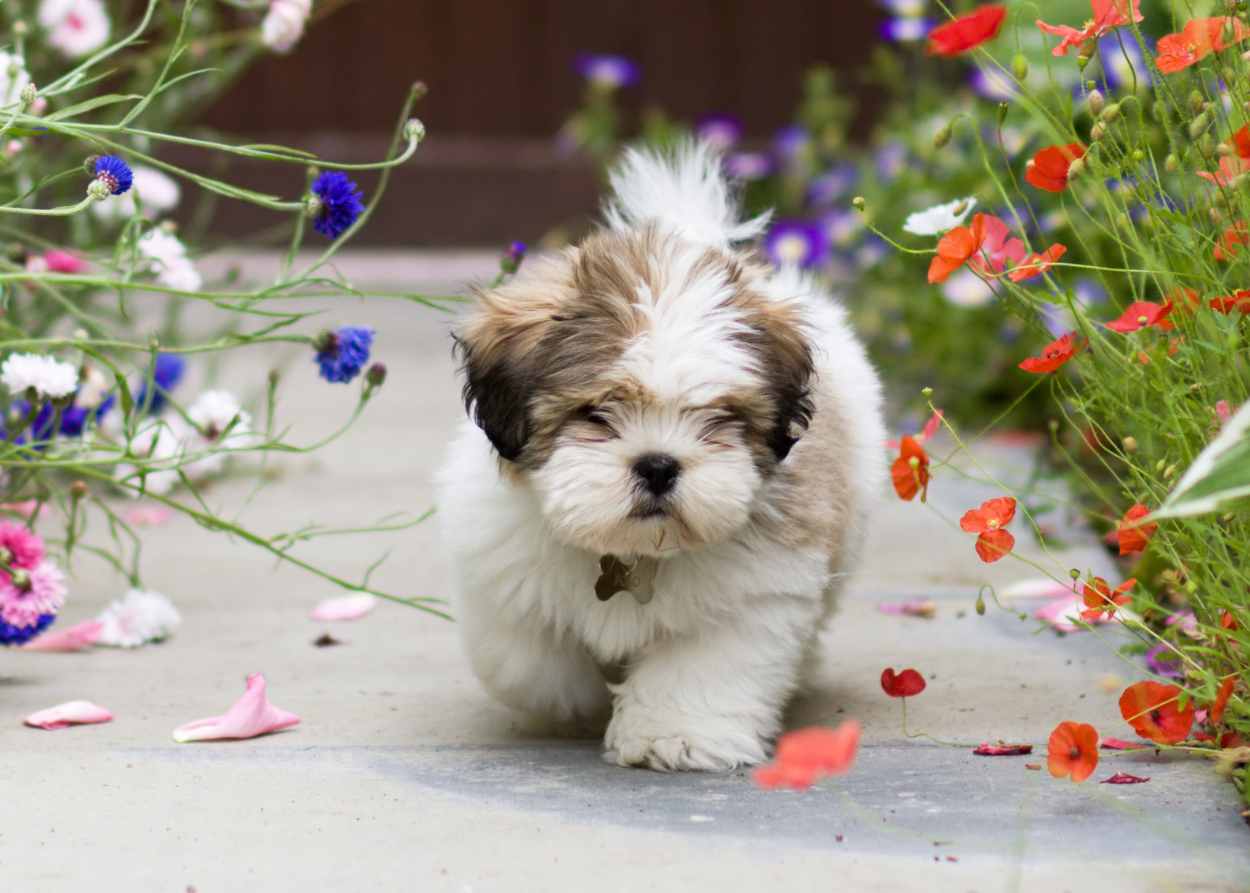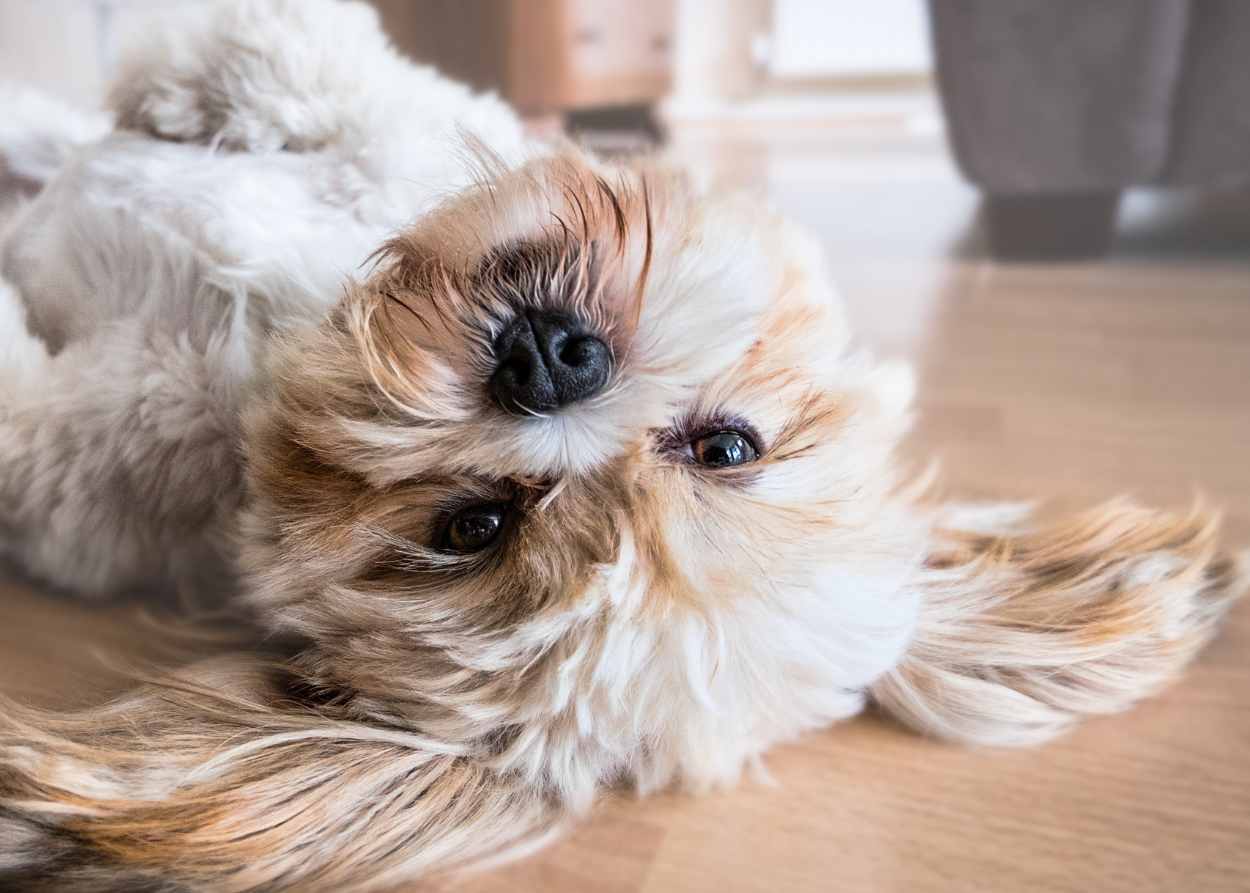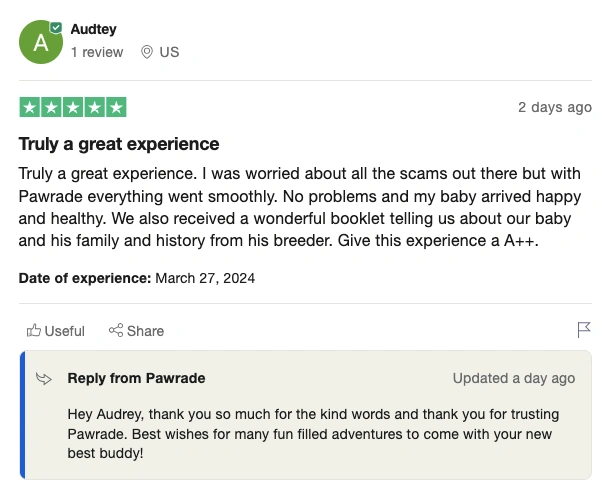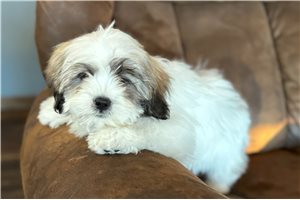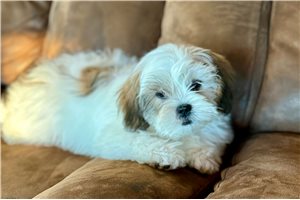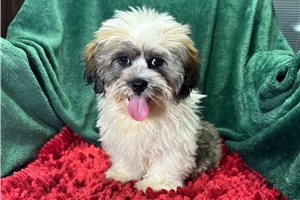“Is that a Shih Tzu? No? How about a Havanese?”
You’ve got your small, long-haired dog with you at a dog-friendly spot for brunch. Your cute pooch has several admirers of her beautiful, long hair.
“No,” you proudly say. “She’s a Lhasa Apso!”
“A Lasso App So? I’ve never heard of one! Tell me about them!” You’re happy to oblige because you can talk about your sweet, funny Lhasa Apso all day!
The Lhasa Apso is a small, ancient breed originating from Tibet, known for its long, flowing coat and alert demeanor. The term "Lhasa" originates from Tibet's capital city, and "Apso" translates from Tibetan as either "bearded" or "long-haired." They were called Abso Seng Kye, the “bark lion sentinel dog.” Bred as indoor watchdogs and companions for Tibetan monks, they have an amazing sense of hearing and are fiercely loyal to their families. Despite their small size, Lhasa Apsos are sturdy, independent dogs with a dignified yet playful nature.
From Tibet to your lap, Lhasa Apsos are confident, comical dogs that make great four-legged best friends. If you're looking for a small but mighty companion, the Lhasa Apso might be the perfect dog breed for you! Find out what it’s like to live with a Lhasa Apso in our Lhasa Apso puppy ownership guide to see if this dog breed is the right choice for you.
The History and Origin of Lhasa Apso Puppies
A Lhasa Apso is one of the oldest dog breeds we have today in the world, appearing around a thousand years ago in the high Himalayan mountains of Tibet. They were considered sacred because they were thought to be the Snow Lion’s earthly representatives, a mythical protector according to Tibetan folklore. Tibetan monks bred them to be regal sentinels inside monasteries and homes while the much larger Tibetan Mastiff guarded the outside. Monks found Lhasa Apsos were excellent watchdogs with their piercing, consistent barking to ward off intruders and alert them of any threats.
Lhasa Apsos are associated with Buddhism and the Dalai Lama. Wealthy people and monks believed Lhasa Apsos embodied the souls of previous Dalai Lamas that had passed on, waiting to be reborn. The only Lhasa Apsos to leave Tibet were those given as gifts from the Dalai Lama himself to foreigners as symbols of good fortune.
The first pair of Lhasa Apsos named Dinkai and Taikoo to arrive in America was a gift from the 13th Dalai Lama, Thubten Gyatso, given to an American naturalist in 1933 named Charles Suydam Cutting. He had previously given the Dalai Llama dogs from his own kennels including two Great Danes. From there, Dinkai and Taikoo began the foundation of Lhasa Apso puppies in America. The American Kennel Club registered the breed in 1935 as part of the Terrier group, and they were quite the hit on the dog show circuits. They were reassigned to the Non-Sporting group in 1959.
Today, Lhasa Apsos rank #85 out of 200 dog breeds on the AKC’s Most Popular Dog Breed List of 2023 between Dogues de Bordeaux and Rat Terriers. Several famous people have discovered how wonderful Lhasa Apsos can be as pets, including Gwen Stefani, Elizabeth Taylor, Liberace, Jane Lynch, and Ellen DeGeneres. You can also find social media accounts dedicated to their cute, silly antics with fans around the world.
What Does a Lhasa Apso Puppy Look Like?
Lhasa Apso puppies are a small yet sturdy breed. They have a body that is longer than they are tall, standing 11-13 inches and weighing 12-18 pounds when fully grown. They have expressive faces and carry their curled tails regally with dignity.
The coat of a Lhasa Apso breed is a defining characteristic. Their dense, double-layered coat cascades down to the ground, creating a regal mane-like appearance. The coat’s thick, lengthy, flowing hair showcases an array of colors such as black, tan, red, silver, blue, white, cream, gold, and brown, often with darker tips. Their coat is more than just good looks; it also served an important purpose in its history. Their long, thick coat helped keep them warm in the frigid Himalayan temperatures, living up to 13,000 feet above sea level.
Is a Lhasa Apso hypoallergenic?
While no dog is truly hypoallergenic, Lhasa Apsos do have significantly less dander than other dogs, making them a good choice for those with allergies although never a guarantee. In addition, they are low-shedding, which means you may still find hair here and there in your brush and floors. However, you’ll appreciate the time you’ll have back by not cleaning up drifting mountains of fur like with other dog breeds that shed significantly more!
Not sure I want this working from home business to end! #dogsoftwitter #lhasaapso #puppylove #wfh pic.twitter.com/OIcKMMPtH0
— Peanut B Pup (@PeanutLhasaApso) March 3, 2022
What’s the Personality Like of a Lhasa Apso Puppy?
Before picking out a Lhasa Apso puppy, you will want to make sure its personality is the right fit for you. Owning a Lhasa Apso puppy consists of much more than just stroking their silky hair. Understanding their quirks and characteristics this breed is known for will help you make an informed decision when considering Lhasa Apso puppy ownership.
Loyal
Lhasa Apso puppies are known for their unwavering devotion to their families. They form strong bonds with their owners and are ready to demonstrate their loyalty to their people. They also crave affection and thrive on companionship with their human family members.
Alert
Lhasa Apsos are hardwired to be excellent watchdogs. They are vigilant and quick to detect any changes that are out of the ordinary. This can pose challenges if you live in a busy area or have guests over, so you’ll need to do your best to socialize your Lhasa Apso.
Independent
Lhasa Apsos are fiercely independent and have a strong sense of self-reliance. Their independent nature can come out as stubbornness when they show they like to be in charge. While your Lhasa Apso may like to cuddle sometimes, they will not be earning the nickname “Velcro dog” anytime soon.
Comical
A Lhasa Apso’s face can show human-like expressions, and they will give themselves away sometimes when they’re up to no good. Lhasa Apso puppies will have you laughing with their silly antics, especially when they’re trying to be mischievous.
Confident
Despite their small size, Lhasa Apsos display confidence and self-assurance in their actions and interactions. They carry themselves with poise and grace with their regal demeanor and prance around their homes confidently.
Playful
Lhasa Apsos have a lively and spirited disposition, often showing bursts of energy. They love playing games and doing activities with their loved ones. Lhasa Apsos mature slowly and remain in a puppy-like state for up to three years, so expect them to be lively just like a puppy for an extended period.
Are Lhasa Apso puppies good with kids?
Lhasa Apsos are loyal to their families, but they are better suited for households with older children who understand how to respect a dog’s boundaries. Young children may play too roughly with Lhasa Apsos, and they are not very patient or tolerant of teasing or roughhousing. Teach children to be respectful of your Lhasa Apso puppy, and always supervise playtime to ensure neither children nor your Lhasa Apso puppy gets upset or hurt.
Grooming Your Lhasa Apso
When you are a Lhasa Apso puppy owner, you’ll need to be prepared to spend lots of time grooming them to keep them clean and healthy. For this reason, establish a relationship with a professional groomer located near you for convenience since you’ll be there frequently!
Hairstyles
One of the most important components of grooming a Lhasa Apso is to maintain their coats with regular haircuts for the style you select. Their long hair is called the “fall.” Their long fall means you can get creative with what you’d like to do with that long mane. Lhasa Apso owners can choose a variety of haircut styles depending on aesthetics and practicality. Some owners will want to keep their flowing locks and spend time maintaining their luscious hair, while others will want a short, practical cut for easy maintenance.
Because Lhasa Apsos have hair instead of fur, they’ll need regular trimming regardless of the hairstyle you choose. Here are some hairstyle choices for Lhasa Apso puppies you can look into to see which one is appealing to you:
- Show ready: This is when you allow their natural hair to grow to floor length according to the breed standard of falling to the paws with a middle part along the spine. This style requires at least 30 minutes of grooming a day to maintain, including brushing and bathing. Their hair is also styled in a practical top knot.
- Coat wrapping: A technique called coat wrapping helps protect the long hairstyle of Lhasa Apsos and other breeds with long, falling hair. After a bath using special products like conditioner and coat oil, owners can wrap sections of hair in rice paper held with elastic bands. It helps protect their long hair and prevents tangles from forming and dirt from collecting, allowing more time in between baths and keeping the hair out of the way when walking and playing.
- Top knot: This is where you can keep the hair growing long on the head and style it like you would a human’s hair. Try out pigtails, bows, a singular knot, or even braids. The rest of your puppy’s hair can be left at whichever length you prefer.
- Puppy cut: If you want a more practical cut, the puppy cut may be appealing to you. Your Lhasa Apso’s hair will be trimmed all over 1-2 inches, making it easier to brush and bathe with less time spent grooming.
Bathing and brushing
Regardless of your Lhasa Apso’s stylish cut, they will need baths at least every 2-4 weeks to keep their coats clean and more frequently if you go for the long coat style. Because of their hair, you’ll need both a dog-friendly shampoo and detangling conditioner. Blow dry their hair on a low heat setting while brushing to keep their hair silky smooth.
Lhasa Apsos should be brushed at least once a day, so keep those grooming tools handy! Make sure their coats are sprayed with a hydrating spray before you brush them with a slicker brush and a metal comb to prevent mats and tangles from forming.
Other grooming needs
A Lhasa Apso will need their little faces wiped down when they get dirty to remove eye gunk, dirt, and anything stuck in their hair. Lhasa Apsos can be susceptible to tear staining, which is normal. You can clean tear stains with pre-moistened eye wipes or special eye wash.
Check their ears for any signs of infection, irritation, or wax. You’ll need to pluck hair out of their ears which can block the airflow, trapping bacteria that can lead to infection.
Keeping your Lhasa Apso’s nails trimmed will help prevent painful paw problems and keep your puppy mobile and ready to romp around.
Training Your Lhasa Apso Puppy
To have a harmonious life with your Lhasa Apso, it’s imperative you start training and socializing them the minute you bring them home. Lhasa Apsos have a few personality quirks that are helpful to know about when training this dog breed. You must be consistent when training your Lhasa Apso puppy. Lhasa Apso puppies need consistent positive reinforcement with lots of praise as a training method.
Lhasa Apsos will not be the most obedient dog in the puppy kindergarten class that always follows your requests. They can be stubborn and will take control if no control is given. They will sniff out inconsistencies and form their own agendas.
Their alert, protective nature can also pose challenges in barking and warming up to strangers. While barking is a normal component of puppy development, some breeds tend to bark more than others. A Lhasa Apso is not a quiet dog breed. Remember, they were bred to be protection dogs for Tibetan monasteries and have retained that loyal guard dog inclination to “tell” you about anything they deem threatening. Their alertness can serve them well but often at the expense of people’s ears and patience. Despite their vocal distaste for perceived threats, they are not aggressive and cannot defend you obviously due to their tiny size, making them terrible guard dogs but great watchdogs.
In addition to training, socialization is another key to having a well-rounded Lhasa Apso puppy. They are hardwired to be wary of strangers, so exposing them to different sights, sounds, and experiences throughout their puppyhood and into their adulthood will make them less suspicious and will help with excessive barking.
Similar to all canine breeds, positive reinforcement training proves highly effective for Lhasa Apso puppies. This approach not only fosters a strong bond between owner and puppy but also serves to keep the pup mentally stimulated and engaged. With dedication, patience, and consistent efforts, teaching basic commands and tricks to Lhasa Apso puppies can be accomplished.
Caring For Your Lhasa Apso Puppy
With proper veterinary care and preventative measures, your Lhasa Apso puppy can live 12-15+ years. The oldest Lhasa Apso dog lived to be 29! Learn about the health concerns of Lhasa Apsos so you are informed and prepared to navigate any health challenges you may experience.
Activity level & exercise needs
Lhasa Apso puppies can be fairly active for a little dog. While they don’t need to go on runs like Australian Shepherds or Siberian Huskies, they do need about 30-45 minutes of exercise a day. Exercise can take many different forms including walks around the block, playtime in the yard or inside, chasing balls, and working interactive toys to keep their brains sharp. Making sure you meet your Lhasa Apso’s activity needs provides a healthy environment.
Nutrition
You should feed your Lhasa Apso food containing all the recommended nutrients formulated for a small dog matching height and weight. Your Lhasa Apso may be a picky eater, so keep trying until you find a food they like.
Be sure to feed healthy treats sparingly and give food according to the instructions. Ask your veterinarian about any supplements before purchasing and giving them to your dog, as you might want to consider some for coat health.
Luxating patellas
Luxating patellas in Lhasa Apso dogs is a condition where the kneecap dislocates from its normal position, causing discomfort and hindering mobility. This genetic ailment may lead to lameness or reluctance to move. Regular veterinary check-ups are crucial to monitor and manage this condition for your Lhasa Apso’s well-being.
Dental issues
A Lhasa Apso has the same number of adult teeth as other dogs – 42 permanent teeth – but they all need to fit in that tiny mouth and jaw. For this reason, Lhasa Apsos can experience dental issues such as crowded, broken, or abscessed teeth, infection, and periodontal disease.
Practice good dental hygiene for puppies to prevent dental issues with regular teeth brushing and inspection. You can also have your Lhasa Apso under the care of a veterinarian for regular professional teeth cleaning.
Kidney issues
Renal dysplasia in puppies occurs when a kidney abnormally develops before birth, and kidney function deteriorates quickly. Call your vet if your puppy experiences increased urination and thirst, slow growth, or a loss of appetite. While there’s no cure, the condition can be monitored with supportive treatment to enhance your Lhasa Apso’s quality of life.
Eye issues
Lhasa Apsos can be prone to several eye infections, both environmental and hereditary. Keeping their eyes and faces clean removes dirt and bacteria that could harm their eyes, and you’ll be able to perform routine inspections to detect any eye problems before they become more severe.
- Cataracts are the result of a breakdown of the eye lens protein and fiber which can cause the lens to cloud, blurred vision, and even blindness. They are easily removed with surgery.
- Progressive retinal atrophy occurs when the rods and cones on the retina break down, leading to blindness.
- Keratoconjunctivitis sicca (KCS) is when the eye doesn’t produce enough or any tear film. Treatment can range from eye drops to surgery.
- Cherry eye is when erupted tear ducts are on the surface of the eye and can be fixed with surgery to the eyelid.
- Glaucoma is painful pressure within the eye which can be treated with medicine and surgery.
Find Your Lhasa Apso Puppy at Pawrade
At Pawrade, we help you simplify your puppy adoption experience. We collaborate with knowledgeable Lhasa Apso breeders to produce happy puppies ready to go to loving homes like yours. Our breeder partners are hand-selected and pass a rigorous selection process. You won’t have to worry about finding a breeder on your own, being on a long waitlist, or falling for scams when you tap into our Lhasa Apso breeder network.
In addition to working with a dedicated breeder, you’ll receive more perks with your Lhasa Apso puppy adoption. Each of our puppies comes with a robust health guarantee, offering comprehensive coverage for both you and the breeder in the event of any health concerns. You’ll also receive health records, 30 days of MetLife insurance, and other paperwork to help you raise a happy Lhasa Apso.
Pawrade offers a hassle-free, scam-free experience. We utilize a secure transaction management platform called PetPay that centralizes security and transparency. We’ll never ask for payment in money orders, wire transfers, gift cards, and other unsecure methods.
Contact us to learn how to start your Lhasa Apso puppy adoption journey. Our Puppy Concierge team will help you pick out the right puppy for you and your household. Browse our available Lhasa Apso puppies for sale to bring home your own bundle of fluffy joy.


